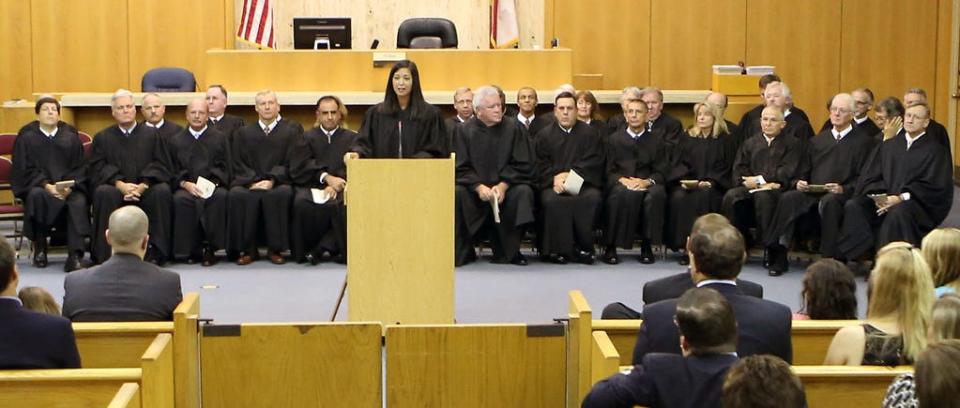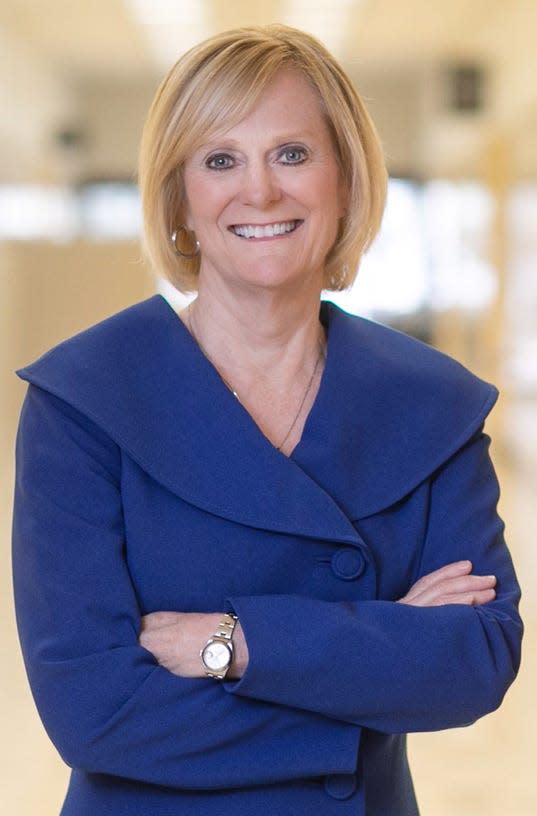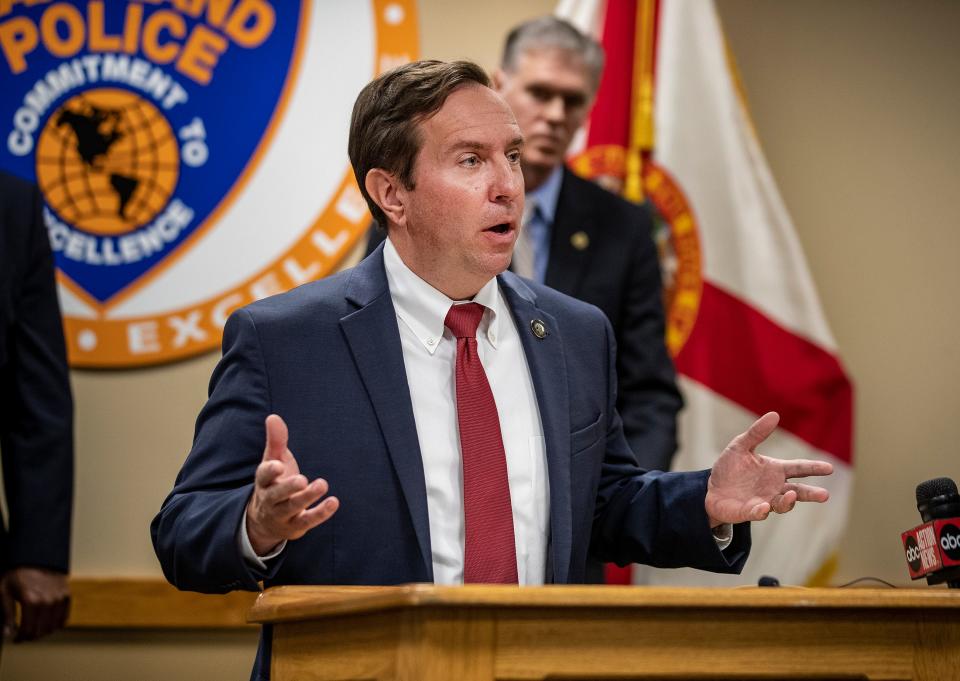Is 20 too many? Florida Supreme Court orders study on reducing judicial circuits
A year after Florida expanded its network of appeals courts, creating a new seat in Lakeland, the state is considering subtraction for the league of trial courts that handle most civil and criminal cases.

Carlos G. Muñiz, chief justice of the Florida Supreme Court, issued an administrative order June 30 creating a committee to explore consolidations among the state’s 20 judicial circuits. In the order, Muñiz makes clear that would mean a reduction in number, not just a realignment.
Muñiz's order responded to a suggestion from Florida House Speaker Paul Renner, R-Palm Coast. In a letter dated June 15, Renner wrote that boundaries for the state’s local courts have not changed for decades “despite significant population and demographic changes during that timeframe.”
Each judicial circuit handles cases from one or more counties. Locally, the 10th Judicial Circuit covers Polk, Hardee and Highlands counties.
Newly created state appellate court begins operations inside cramped quarters in Lakeland
Openings appear in 2024 as Public Defender, Polk County Property Appraiser won't run again
DeSantis appoints 3 judges to Lakeland-based appeals court, including 1 who lost election
As Renner noted, the populations in the 20 circuits vary widely. The 11th Circuit, comprising Miami-Dade County, contains about 2.7 million people, he wrote, while the 16th Circuit, encompassing Monroe County, has fewer than 100,000 residents.
“I believe that the consolidation of circuits might lead to greater efficiencies and uniformity in the judicial process, thereby increasing public trust and confidence,” Renner wrote. “I also believe that the consolidation of circuits would result in improved economies of scale in the judiciary's back-office operations, leading to substantial cost savings for Florida's taxpayers.”
While some circuits cover just one large county, such as the 13th (Hillsborough County), others contain several smaller counties. The Third Circuit includes seven: Columbia, Dixie, Hamilton, Lafayette, Madison, Suwannee and Taylor.
Nick Sudzina, court administrator for the 10th Judicial Circuit, described it as a medium-sized circuit. Polk, Hardee and Highlands counties have a combined population of about 900,000.
Circuit courts have trial jurisdiction over matters not assigned by law to county courts. They handle a range of matters, including criminal cases, civil disputes, probate questions and requests for injunctions. Circuit court judges are elected in nonpartisan contests and serve for six-year terms.
Judicial circuits also include county courts, which oversee a more limited range of cases. The 10th Judicial Circuit has 28 circuit judges and 12 county judges — 10 for Polk County and one each for Hardee and Highlands, Sudzina said.
In each circuit, a State Attorney’s Office oversees the prosecutions of criminal cases. The state attorney and public defender in each circuit are elected to four-year terms.
In his letter, Renner pointed to the language the Florida Supreme Court used in authorizing creation of the Sixth Court of Appeal. That court, based in Lakeland, began operations in January, adding to the five existing state appellate courts.
In forming the new court, the state revised the boundaries of three existing districts. Renner wrote that the main reason given for establishing a new court was to "promote public trust and confidence.”
In his order, Muñiz named the 14 members of the Judicial Circuit Assessment Committee. The panel includes judges, lawyers, a state attorney, a public defender and a clerk of court, collectively representing much of the state. Muñiz appointed Stacy Butterfield, clerk of court for the 10th Judicial Circuit, to the committee, which is chaired by Jonathan Gerber, a judge from the Fourth District Court of Appeal.

“It is an honor to be appointed to serve on this workgroup,” Butterfield said in an emailed statement. “It is good business practice and good government to periodically review operations to ensure full efficiency and effectiveness. I look forward to contributing to the group’s work and providing thoughtful consideration and study of what will best serve our state.”
The committee is scheduled to hold its first meeting Friday.
Muñiz directed the committee to confer with chief judges and other court representatives, court budget commissions, The Florida Bar, the public and “other justice system entities it deems appropriate.” He ordered the panel to submit a report with recommendations by Dec. 1.
Sudzina said that he does not think judges in the 10th Judicial Circuit have strong opinions on the proposal.
“We're certainly not complaining about the size or the workload in our circuit,” he said. “We just handle whatever cases are filed in our circuit. We were certainly not the impetus behind this study committee. I guess we'll all have to deal with the findings and results and if there are going to be any changes.”

Sudzina said it seems unlikely that the 10th Circuit would be consolidated with either of its neighbors, which both cover metropolitan areas. The Ninth Circuit comprises Orange and Osceola counties (combined population of about 1.8 million), and the 13th Circuit is limited to Hillsborough (1.5 million).
It seems more conceivable that the 10th Judicial Circuit could pick up another county or two, such as Lake or DeSoto.
“If we add a county or lose a county, we're just going to continue doing the work like we do every day,” Sudzina said. “So it really doesn't matter to us. I don't see any severe impact on our circuit.”
Sudzina said that the 10th Circuit requested another circuit judge this year, as did other circuits. He said the Florida Legislature did not approve any additional judges.
If the Supreme Court chooses to consolidate any districts, that would mean a reduction in the number of state attorneys and public defenders. Brian Haas, the state attorney for the 10th Circuit, is up for re-election next year. Rex Dimmig, the public defender for the 10th Circuit, is not seeking re-election.
Gary White can be reached at gary.white@theledger.com or 863-802-7518. Follow on Twitter @garywhite13.
This article originally appeared on The Ledger: Florida high court considers reducing state's judicial circuits

